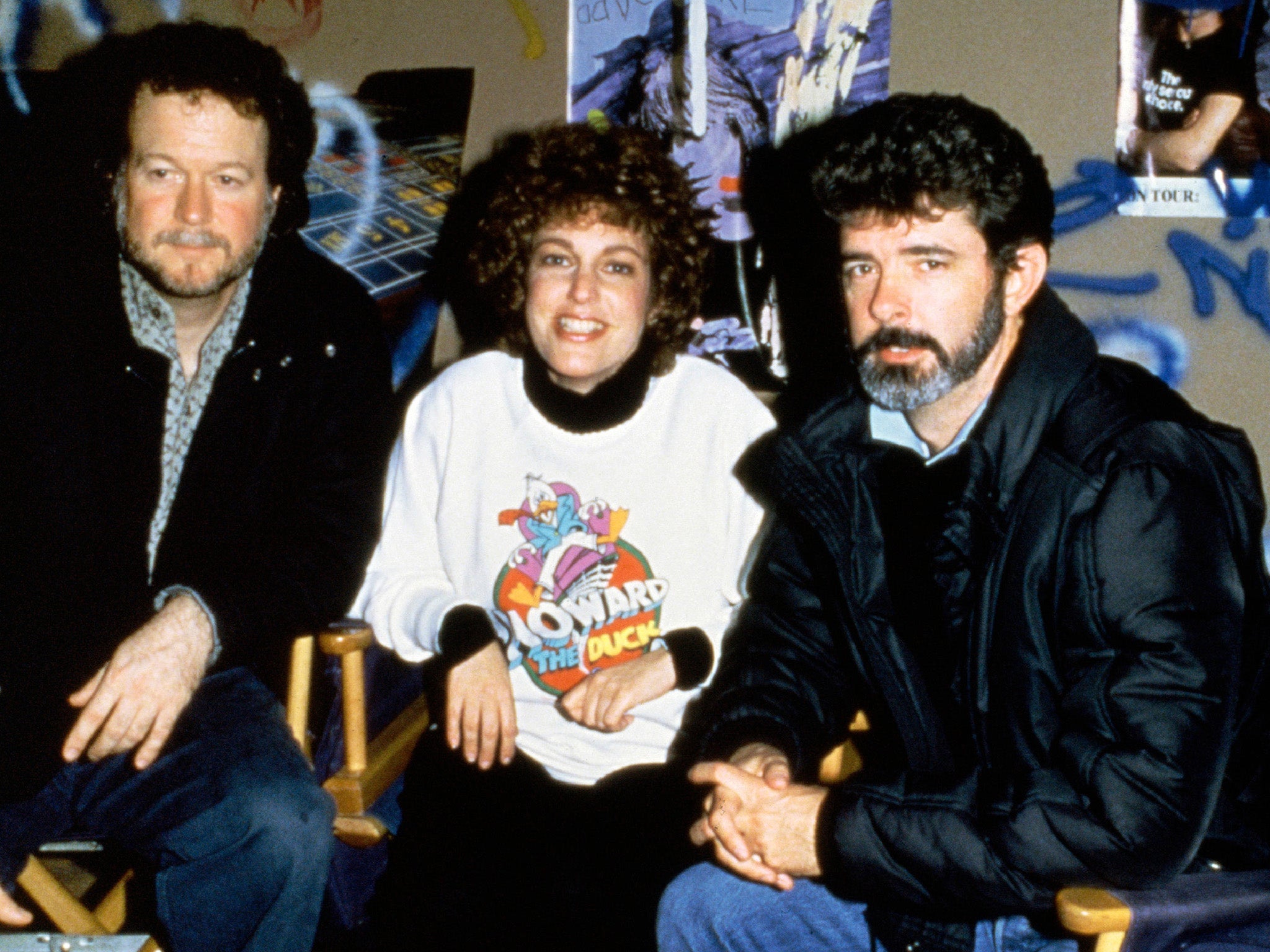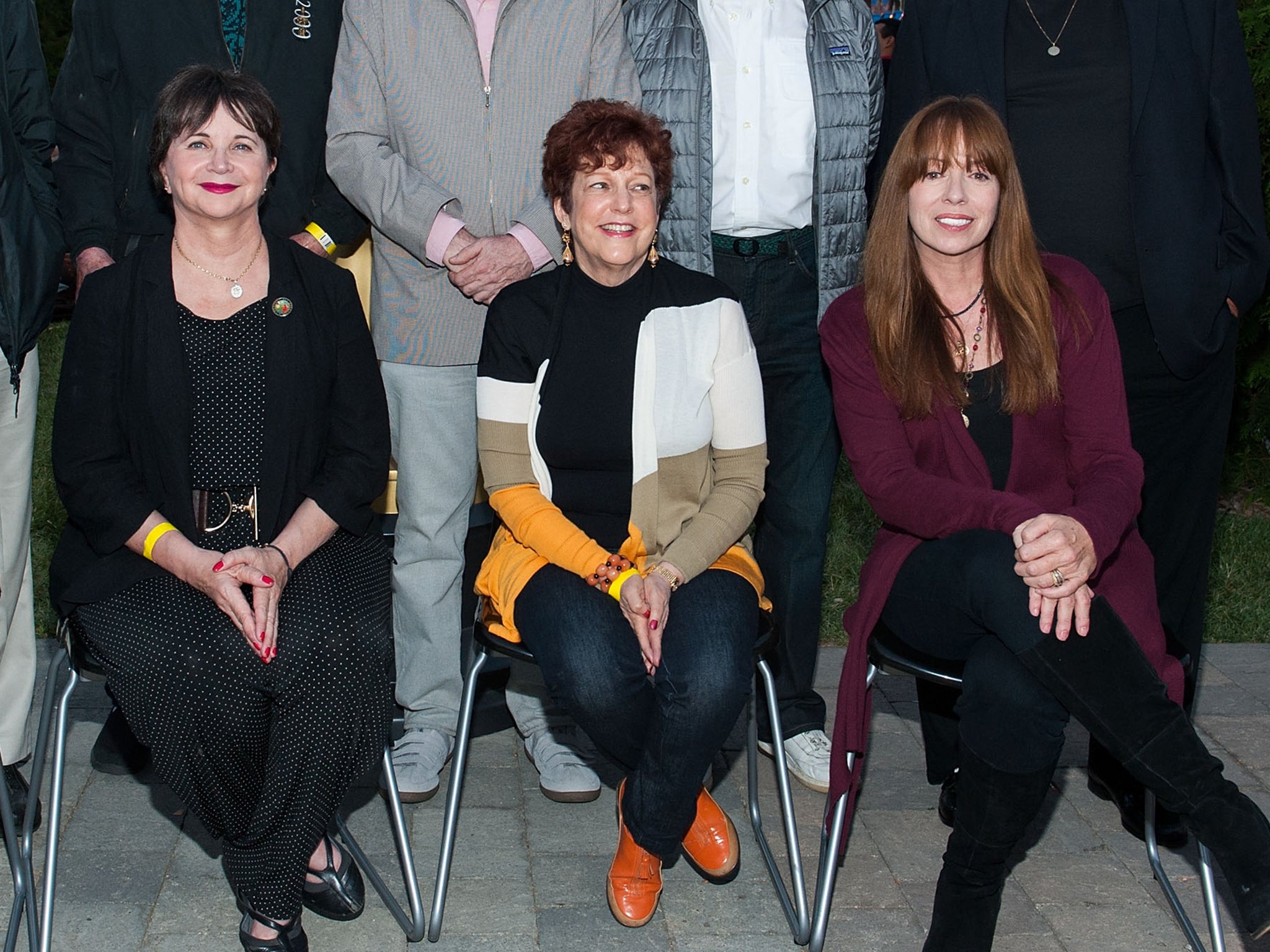Gloria Katz: Screenwriting wit behind films such as 'American Graffiti' and characters such as Princess Leia
With her husband Willard Huyck, she formed a duo behind commercial successes such as 'Indiana Jones and the Temple of Doom' – and the odd flop

Your support helps us to tell the story
From reproductive rights to climate change to Big Tech, The Independent is on the ground when the story is developing. Whether it's investigating the financials of Elon Musk's pro-Trump PAC or producing our latest documentary, 'The A Word', which shines a light on the American women fighting for reproductive rights, we know how important it is to parse out the facts from the messaging.
At such a critical moment in US history, we need reporters on the ground. Your donation allows us to keep sending journalists to speak to both sides of the story.
The Independent is trusted by Americans across the entire political spectrum. And unlike many other quality news outlets, we choose not to lock Americans out of our reporting and analysis with paywalls. We believe quality journalism should be available to everyone, paid for by those who can afford it.
Your support makes all the difference.Throughout the 1960s and 70s, Gloria Katz was among the female exceptions in a male-dominated film industry.
The screenwriter, who has died aged 76, made contributions Hollywood’s classics such as American Graffiti and – uncredited – to Star Wars, but faced a great deal of sexism to succeed in her career.
She was very much an unsung feminist gem in shaping the way for women in the industry.
Katz’s inseparable ally in her success was her husband and screenwriting partner, Willard Huyck. The pair met when they were studying film at the University of Southern California.
“I was going out with his then-best friend,” she told People magazine in 1984. “I thought he was very nice, bright and shy. When I stopped seeing the best friend, Willard began looking better and better.”

They were married 45 years.
Katz grew up in Los Angeles as the daughter of a wealthy truck-stop owner, once being described by a friend as “a Jewish Cinderella from Beverley Hills.”
She majored in English at Berkeley in the political whirlwind of the 1960s and went on to the University of Southern California, LA in to do a masters in history.
Not one to settle for something she didn’t want, Katz switched courses when she saw the film students appeared to be having more fun.
Huyck once explained Gloria came from a generation of women who refused to learn to type for fear of being stuck working as secretaries – when they worked, she talked, he typed.
Katz was one of four women in a class of 50 and claimed the professors were biased towards helping the boys, offering the female students no support with their projects.
In one interview, she recalled: “It was like ‘you’re taking somebody’s position and you know you’re never going to work in Hollywood’.”
Despite the prejudices of sexism threatening to hinder Katz’s career from the very start, she was determined to succeed. Katz had originally believed her greatest strength was editing, but she became fed up of not being taken seriously and turned to writing.
Her lucky break came when she met fellow student Huyck at the screening of a low-budget classic.
Her marriage to Huyck led to a writing collaboration that saw them nominated for an Oscar after writing the script for coming-of-age comedy drama American Graffiti in 1973.
The pair’s screenwriting profession kicked off when Huyck’s close friend George Lucas approached them with the deal to write the script for the film.
Huyck and Katz share a nomination with Lucas for the rather longwinded Oscar category of “story and screenplay based on factual material or material not previously produced or published”.
The couple, who took turns for top billing, had varying degrees of success with a series of other films, including Howard the Duck, the Liza Minnelli-starring Lucky Lady, Messiah of Evil (which Katz called “a real bowwow”) and the Dudley Moore and Eddie Murphy-starring Best Defence.
The pair went on to help Lucas later in his career by co-writing Indiana Jones and the Temple of Doom, having the first draft finished in just six weeks.
Perhaps Katz’s most important contribution to film, though, was her uncredited input in shaping the character of Princess Leia in Lucas’s 1977 film, Star Wars.
Pushed for time as filming was about to start, Lucas sent his script to Katz and Huyck, urging them to polish and edit it.
The couple wrote around 30 per cent of the film’s dialogue and helped with the characterisation and humour of Leia, transforming her into a feisty, funny woman instead of a passive princess.
“She can take command,” Katz said in one interview. “She doesn’t take any shit, but at the same time she’s vulnerable ... instead of just a beautiful woman that schlepped along to be saved.”
Originally the character seemed to be just a beautiful damsel in distress, but they wanted her to be the one that initiated the action.
The personality the couple gave the princess seemed to be a reflection of Katz’s own bold attitude and determination.
Although their script doctoring had a huge impact on the film, at the time the humble couple never named themselves as the writers.
“We didn’t want to take the credit away from him [Lucas] – he had been working on Star Wars for a very long time – it was his vision,” Katz said.
In 1982 the writers were approached by director Steven Spielberg to produce the screenplay for Indiana Jones and the Temple of Doom.
The three of them were invited to executive producer Lucas’s ranch to brainstorm – for hours. She subtly let slip that one of the film’s least glorious moments was the dinner scene. “Steve and George both still react like children,” she told People magazine. “So their idea was to make it as gross as possible.”
Their hours of rambling were recorded by Lucas, who had them transcribed. When they reached the point of the final draft, Katz went into labour with their daughter, Rebecca.
Her husband, however, waited before the last page was printed before driving her to hospital.
As Katz once said: “Discipline is the most important thing in writing.”
Gloria Katz, screenwriter, born 25 October 1942, died 25 November 2018
Join our commenting forum
Join thought-provoking conversations, follow other Independent readers and see their replies
Comments